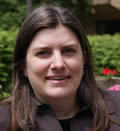
On October 30, I attended Jon Stewart and Stephen Colbert’s Rally to Restore Sanity and/or Fear in Washington, D.C. Drawing well over 200,000 people to the National Mall, the event was part entertainment festival, part media criticism.
The former elements of the three-hour presentation by Stewart, Colbert and a group of performers were intended to assuage the attendees’ frustration with the current state of political discourse. The latter elements, showcased most eloquently by Jon Stewart’s ending speech, indicted the major news media outlets, particularly the 24-hour cable news factories, for corrupting that discourse by accentuating its divisive and sensationalized aspects.
While the rally had its slow moments (and standing elbow-to-elbow in a crowd for three hours of anything is taxing), on the whole I found it to be a thrilling experience. The sheer size of the crowd combined with the good mood everyone was in by virtue of the event’s underlying tone — to be respectful of others and deny fear-driven anger — offered the harmonious sensation of mass agreeability one rarely gets to experience when it comes to politics.
When I got back to my hotel afterward, I scurried to the Internet to try and sustain that warm, fuzzy feeling by reading accounts of the afternoon. But the fuzzies dissipated when I saw reports from those who had watched on TV. Many viewers found the broadcast of the Rally to be tedious and pointless, and they mocked the very moments I had most enjoyed (such as the crowd exercises, led by the Discovery channel’s MythBusters, which let us literally feel how large an audience we were —The Wave took forever to make its way across the Mall).
It was quite apparent that being there in person was a very different experience than watching from a living room.
Yet another set of contrasting reactions emerged from the media in subsequent days, as numerous journalists lashed out at Jon Stewart for his final speech, one that had been well-received both at the rally and by most TV viewers. The New York Times’ David Carr complained that Stewart was misguided; not enough people watch cable news for those outlets to be at fault for our communicative dissonance. MSNBC’s Keith Olbermann railed that Stewart’s logic was flawed; cable news isn’t the problem, Fox News is the problem. Fox News’ Glenn Beck dismissed the rally as juvenile nonsense on the level of a high school play.
Conversely, media analyst Jeff Jarvis said the news naysayers got it wrong: “Stewart has given us reason again to come together, to set new standards, to expect real change, to celebrate democracy (not government), to communicate (around media) — in short, and in every sense of the word, to rally.”
What struck me after considering all of these varied viewpoints, including my own, is that they are indicative of exactly what prompted the Rally for Sanity in the first place: divided experiences are leading to intractably divided viewpoints. Those who were at the Rally processed the event differently than those who watched on TV, who read about it in The New York Times or viewed a Fox News piece about it or followed Olbermann’s tweets about it, who operate within the media bubble or outside of it, who don’t regularly watch The Daily Show or who do, and on and on.
While the digital age has brought an explosion of information outlets and access to more viewpoints than ever before, that very expansion has conversely enabled us to bury ourselves more deeply into narrower sanctuaries. That isn’t to say we were better off when we had no Internet and only a handful of television channels. But I wonder if the stunningly rapid growth of new media technologies and interfaces has left us dizzied, and the retrenchment of beliefs based on strategic selection of experiential material is one way people are buttressing themselves.
Until we can better understand the impact of these new models of social and political discourse and the potentially divided subjectivities they engender, sanity may remain elusive.
Christine Becker, an associate professor of film, television and theatre at Notre Dame, was recently named by The Wrap as one of 25 TV superfans to follow on Twitter, where she can be found @crsbecker.